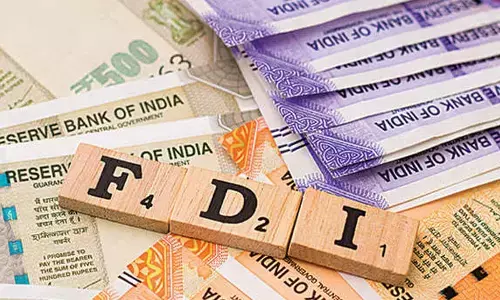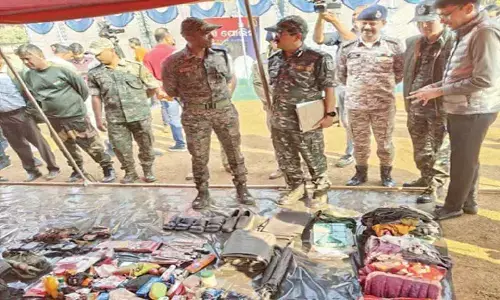Nationalisation of banks - Part II

Although Nationalisation of banks has been started in the regime of Indira Gandhi, the process has is still in progress. The major banks of India are still undergoing merger and the Reserve Bank of India to make sure the process goes smoothly has constituted many committees.
Although Nationalisation of banks has been started in the regime of Indira Gandhi, the process has is still in progress. The major banks of India are still undergoing merger and the Reserve Bank of India to make sure the process goes smoothly has constituted many committees.
Here are the list of committees constituted by the government and their recommendations Recommendations of Deepak Mohanty Committee on Medium-term Path on Financial Inclusion
The Reserve Bank of India (RBI) has released the Report on Medium-term Path on Financial Inclusion submitted by 14-member committee headed by RBI Executive Director Deepak Mohanty.
RBI had constituted the committee in July 2015 to examine the existing policy regarding financial inclusion and the form a five-year (medium term) action plan. It was tasked to suggest plan on several components with regard to payments, deposits, credit, social security transfers, pension and insurance.
Key recommendations
Augment the government social cash transfer in order to increase the personal disposable income of the poor. It would put the economy on a medium-term sustainable inclusion path.
Sukanya Shiksha Scheme: Banks should make special efforts to step up account opening for females belonging to lower income group under this scheme for social cash transfer as a welfare measure.
Aadhaar linked credit account: Aadhaar should be linked to each individual credit account as a unique biometric identifier which can be shared with Credit information bureau to enhance the stability of the credit system and improve access.
Mobile Technology: Bank’s traditional business model should be changed with greater reliance on mobile technology to improve ‘last mile’ service delivery.
Digitisation of land records: It should be implemented in order to increase formal credit supply to all agrarian segments through Aadhaar-linked mechanism for Credit Eligibility Certificates (CEC).
Nurturing self-help groups (SHGs): Corporates should be encouraged to nurture SHGs as part of Corporate Social Responsibility (CSR) initiative.
Subsidies: Government should replace current agricultural input subsidies on fertilizers, irrigation and power by a direct income transfer scheme as a part of second generation reforms.
Agricultural interest subvention Scheme: It should be phased out.
Crop Insurance: Government should introduce universal crop insurance scheme covering all crops starting with small and marginal farmers with monetary ceiling of Rs. 2 lakhs.
Multiple Guarantee Agencies: Should be encouraged to provide credit guarantees in niche areas for micro and small enterprises (MSEs). It would also explore possibilities for counter guarantee and re-insurance.
Unique identification of MSME: It should be introduced for all MSME borrowers and information from it should be shared with credit bureaus.
Urijit patel committee report
The Expert Committee to Revise and Strengthen the Monetary Policy Framework, headed by RBI Deputy Governor Urijit R Patel submitted its report to RBI Governor Dr. Raghuram Rajan. Recommendations of the Urijit R Patel committee:
1.RBI should adopt the new Consumer Price Index (CPI) for anchoring the monetary policy.
2.Set the inflation target at 4% with a band of +/- 2% around it.
3.Monetary policy decision making should be vested in a Monetary Policy Committee (MPC) that should be headed by the Governor.
4.The two schemes- Dependence on Market Stabilisation Scheme (MSS) and Cash Management Bills (CMBs) may be discontinue and the government debt and cash management must be taken over by the government’s Debt Management Office.
5.All fixed income financial products should be treated on par with the bank deposits for the purposes of taxation and TDS.
6.Detachment of Open Market Operations (OMOs) from the fiscal operations and instead linked solely to the liquidity management. OMOs should not be used for managing yields on government on government securities.
Main objective of the committee was to recommend what needs to be done to revise and strengthen the current monetary policy framework with a view to making it transparent and predictable.
Committee on Comprehensive Financial Services for Small Businesses and Low Income Households: Nachiket Mor
With this perspective in view and in accordance with the Terms of Reference given to it, in its deliberations, the Committee focussed its attention on:
1. Framing a clear and detailed vision for financial inclusion and financial deepening in India.
2. Articulating a set of design principles that will guide the development of institutional frameworks and regulation for achieving financial inclusion and financial deepening, including approaches to prudential regulation, consumer protection, and systemic risk management for institutions involved in financial inclusion and deepening, so that the eventual design: (a) provides a complete suite of suitable financial services to each and every small business and low-income household in a flexible, convenient, reliable, and continuous manner; (b) is highly cost effective; (c) ensures a high degree of customer protection, and enhancement of financial wellbeing; and (d) enhances systemic stability.
3. In the light of the detailed vision and the design principles, carefully reviewing each existing channel and suggesting how its performance may be improved based on both domestic and global experiences.
4. Where necessary, recommending new ideas for consideration by the RBI and other policy makers, in order to address specific barriers to progress and to encourage participants to work swiftly towards the full achievement of the vision in a manner that is consistent with the design principles.
5. Developing a comprehensive monitoring framework to track the progress of the financial inclusion and deepening efforts on a nationwide basis.
Executive Summary and List of Recommendations
The six vision statements are:
1. Universal Electronic Bank Account (UEBA): By January 1, 2016 each Indian resident, above the age of eighteen years, would have an individual, full-service, safe, and secure electronic bank account.
2. Ubiquitous Access to Payment Services and Deposit Products at Reasonable Charges: By January 1, 2016, the number and distribution of electronic payment access points would be such that every single resident would be within a fifteen minute walking distance from such a point anywhere in the country. Each such point would allow residents to deposit and withdraw cash to and from their bank accounts and transfer balances from one bank account to another, in a secure environment, for both very small and very large amounts, and pay ―reasonable‖ charges for all of these services. At least one of the deposit products accessible to every resident through the payment access points would offer a positive real rate of return over the consumer price index.
3. Sufficient Access to Affordable Formal Credit: By January 1, 2016, each low-income household and small-business would have ―convenient‖ access to formally regulated lenders that have the ability to assess and meet their credit needs, and offer them a full-range of ―suitable‖ credit products, at an ―affordable‖ price. By that date, each District and every ―significant‖ sector (and sub-sector) of the economy would have a Credit to GDP ratio of at least 10 per cent. This ratio would increase every year by 10 per cent with the goal that it reaches 50 per cent by January 1, 2020.
4. Universal Access to a Range of Deposit and Investment Products at Reasonable Charges: By January 1, 2016, each low-income household and small-business would have ―convenient‖ access to providers that have the ability to offer them ―suitable‖ investment and deposit products, and pay ―reasonable‖ charges for their services. By that date, each District would have a Total Deposits and Investments to GDP ratio of at least 15 per cent. This ratio would increase every year by 12.5 per cent with the goal that it reaches 65 per cent by January 1, 2020.
5. Universal Access to a Range of Insurance and Risk Management Products at Reasonable Charges: By January 1, 2016, each low-income household and small business would have ―convenient‖ access to providers that have the ability to offer them ―suitable insurance and risk management products which, at a minimum allow them to manage risks related to:
(a) commodity price movements; (b) longevity, disability, and death of human beings; (c) death of livestock; (d) rainfall; and (e) damage to property, and pay ―reasonable‖ charges for their services. By that date, each District would have a Total Term Life Insurance Sum Assured to GDP ratio of at least 30 per cent. This ratio would increase every year by 12.5 per cent with the goal that it reaches 80 per cent by January 1, 2020.
6. Right to Suitability: Each low-income household and small-business would have a legally protected right to be offered only ―suitable‖ financial services. While the customer will be required to give ―informed consent she will have the right to seek legal redress if she feels that due process to establish Suitability was not followed or that there was gross negligence.
Rangarajan Committee Recommendations
The Reserve Bank of India constituted an External Expert Review Committee (EERC), under the Chairmanship Dr. C. Rangarajan for evaluating the activities of the Institute and redefining its role and suggesting a roadmap for the future.
The other members of the committee were Shri Marc Hollanders, Special Adviser on Financial Stability & Market Infrastructure, Bank for International Settlements; Shri T.V. Mohandas Pai, Head, Human Resources, Infosys Ltd; Prof. H. Krishnamurthy, Principal Research Scientist, Indian Institute of Science; and Shri G. Padmanabhan, Chief General Manager, Department of Payment and Settlement Systems, Reserve Bank of India.
Terms of Reference
The overarching aim of the EERC was to suggest measures for the development of the IDRBT into a vibrant knowledge based Institute. The specific terms of reference were to:
1.Review the activities of the Institute since its beginning for the quality, scope and relevance from the point of view of the objectives of its charter and suggest a roadmap for the future to convert the Institute into an Institute of international standing.
2.Suggest appropriate measures to attract the best talent for teaching/research in banking technology.
Recommendations
The EERC, which submitted its report in July 2009, has made valuable recommendations and a snapshot of the key recommendations is as under:
1.The primary goal of the Institute Banking Technology. The Institute should become a research based institute working at the intersection of banking and technology is research. The focus should be to conduct applied research and experimental development in the area of focused on applied research.
2.Focus on four major areas of research, viz., Financial Networks and Applications, Electronic Payments and Settlement Systems, Security Technologies for the Financial Sector, Financial Information Systems and Business Intelligence.
3.Focus on the systemic requirements of the banking system which have large scale implications on the effective maintenance and running of the system.
4.Conduct collaborative research programmes with reputed national / international universities in the relevant areas.
5.Faculty to be encouraged to submit research proposals to funding agencies in India and abroad.
6.Revamp education and training activities with the aim to develop technically competent and in-house expertise in banks to efficiently supervise and manage technology-intensive resources like data centres, data recovery centres, corporate network, etc.
7.Offer tailor made programmes based on the roles of the banking professionals.
8.Ensure the quality of training through standardisation of course contents, peer review of presentations, audit of training sessions, feedback from participants, guest faculty with practical experience, etc.
9.To function as a primary institute of excellence in the area of research and development in banking technology, the Institute needs to shed its function of providing various services by promoting a subsidiary.
10.Develop a cadre of well regarded faculty, who can focus on the needs of large scale systems, are capable even when benchmarked against global skills and have an inclination for research.
11.Two way flow between the institute and industry and academia to be encouraged for sourcing talent on a global basis.
12Become a member of technology standard setting bodies globally in the area of banking.
By:Balalatha Mallavarapu




















